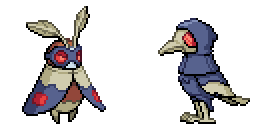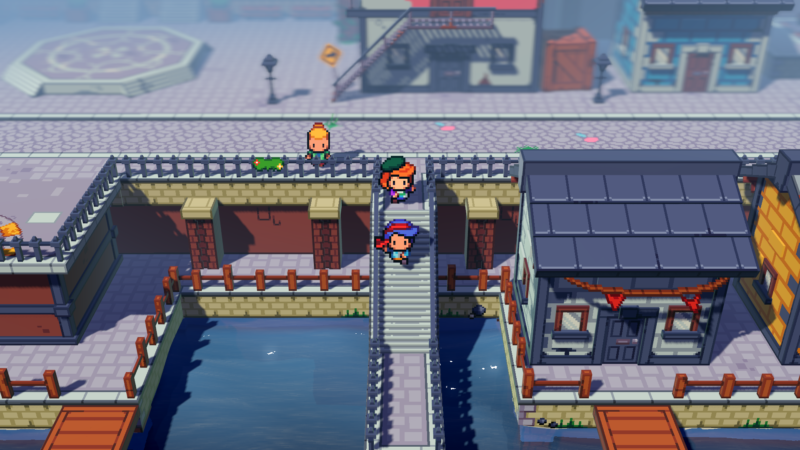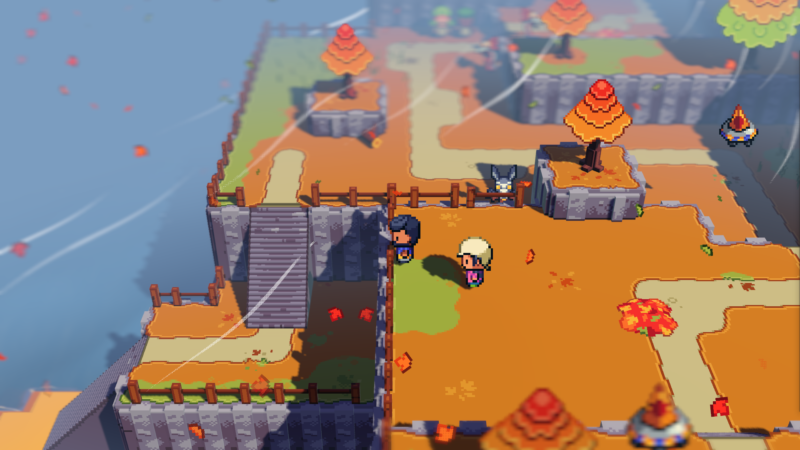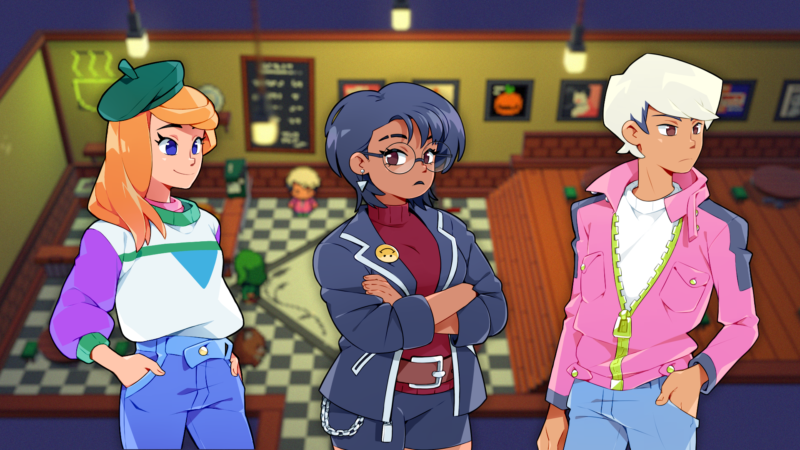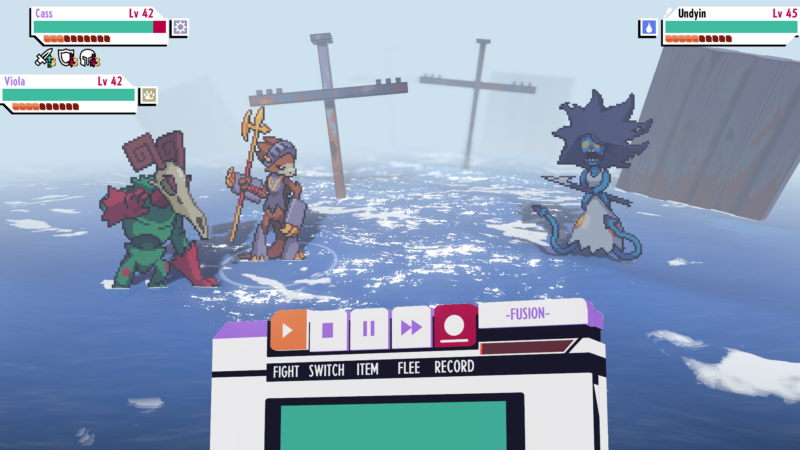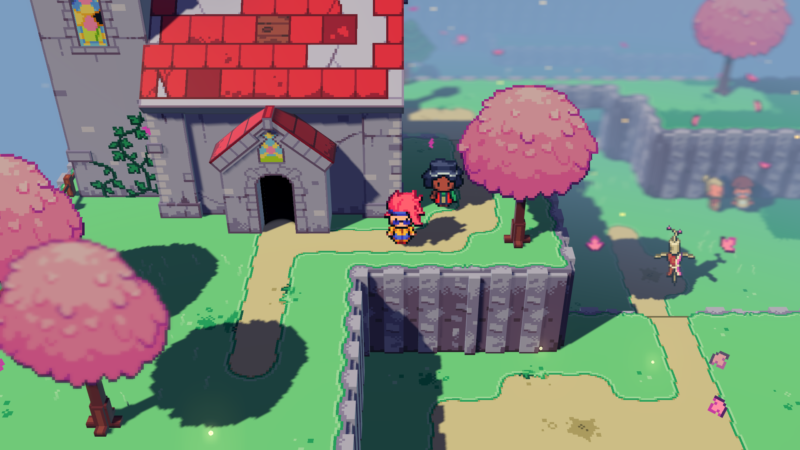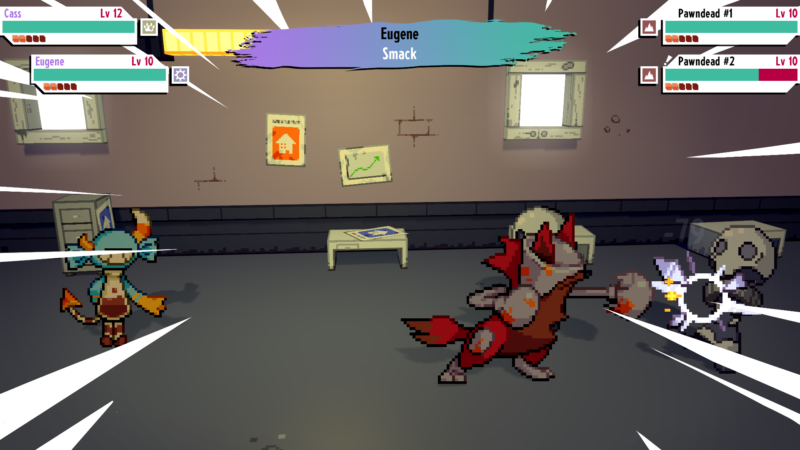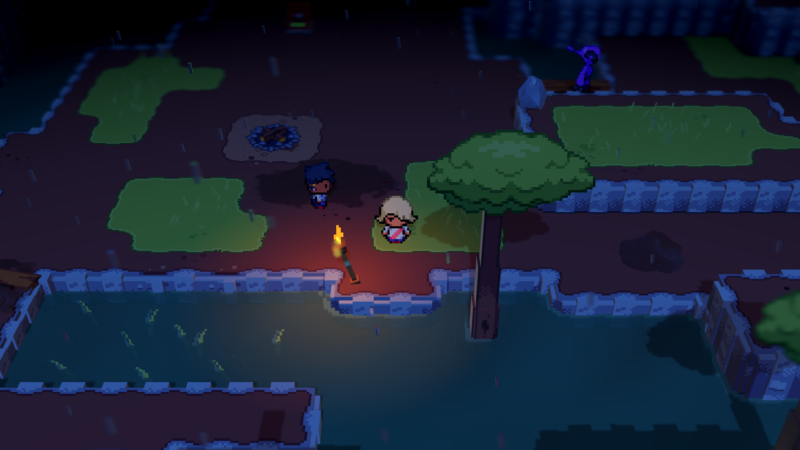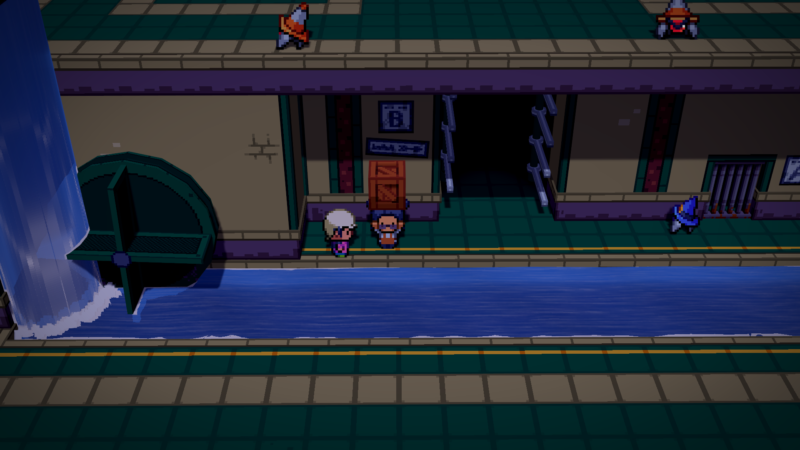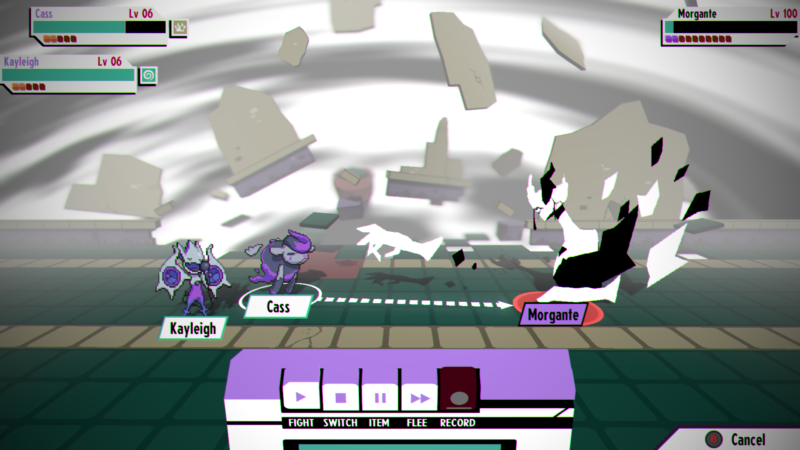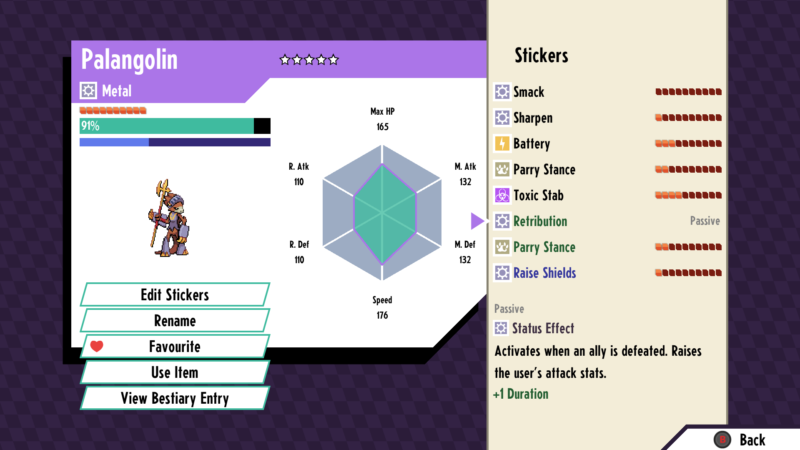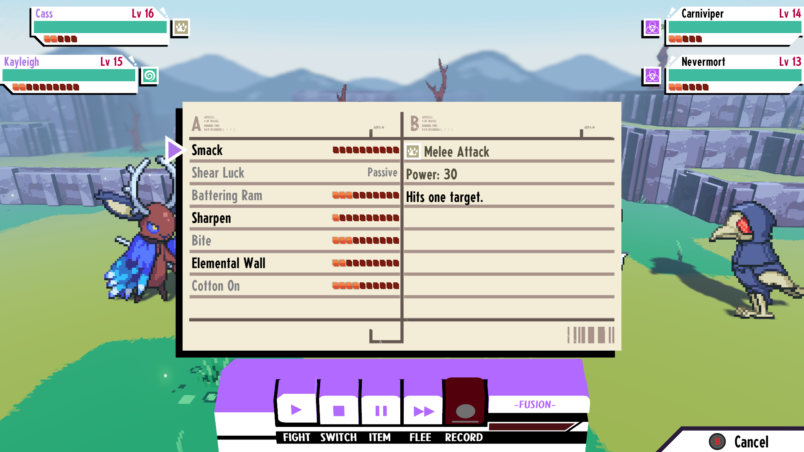Welcome back! Today we’re going to look at combat and moves in Cassette Beasts – since battling monsters as monsters is at the core of the gameplay, we thought it’d be a good idea to dive into how it works!
Stickers
You and your partner are able to act in battle using stickers – a list of actions that you can trigger on your turn. Each monster has a certain number of slots available to assign stickers, and monster forms are limited in which stickers they are able to use.
Let’s take a look!
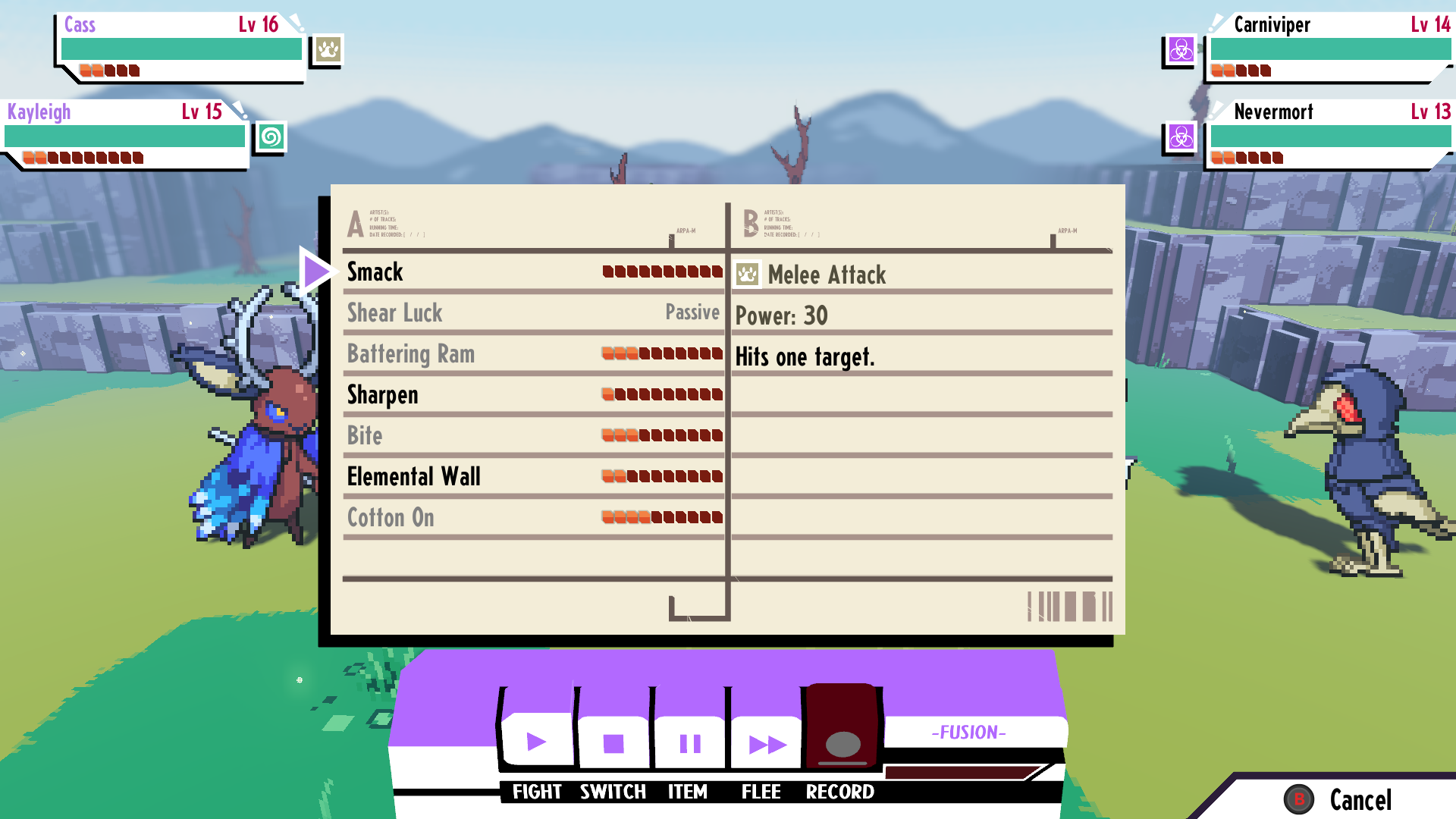
You’ll notice that most moves here have a set of orange squares next to them: these represent the number of Action Points, or AP, it costs to use them. A party member gains 2 AP per turn, so you have some choices to make – do you spend your AP on a low cost move such as “Sharpen” this turn, or perhaps use a no-cost move like “Smack” in order to use a stronger move next turn? You’ll be making choices like this a lot as you fight: it’s time to think strategically!
You’ll also notice that one of the moves here does not have a cost, and instead is listed as “passive”. Some stickers have their own trigger conditions in battle, such as losing a certain amount of HP.
All of these stickers can be assigned and removed from a monster tape without any cost, so you are free to experiment to find the best loadouts for your monster forms!
Fusion
Wait, didn’t we say last time we’d show what these two looked when fused?
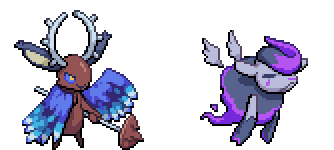
When you and your partner fuse in battle, you combine into a powerful and unique Fusion form!
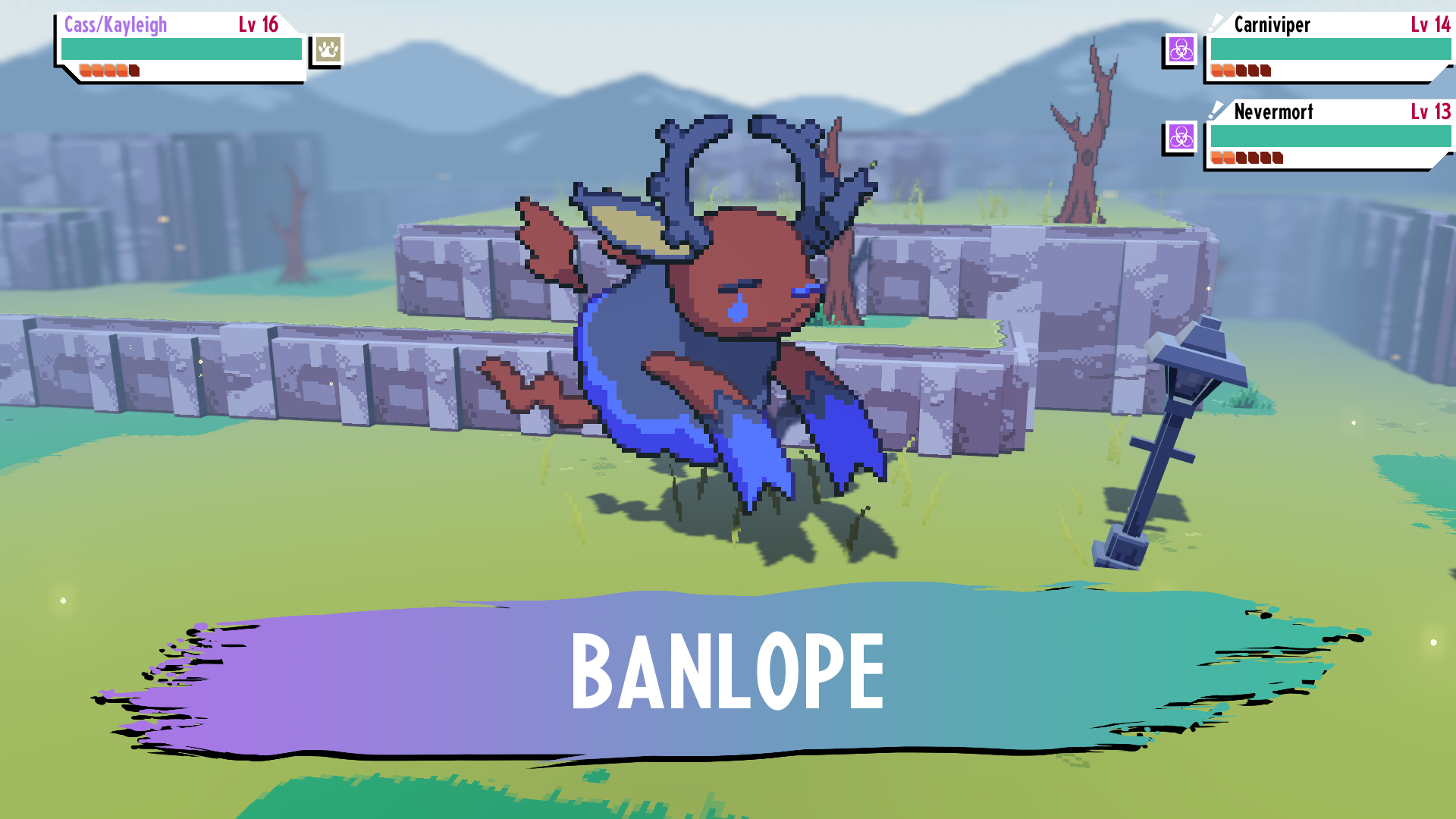
How does this affect your move list, then? Well, you get both move pools at once.
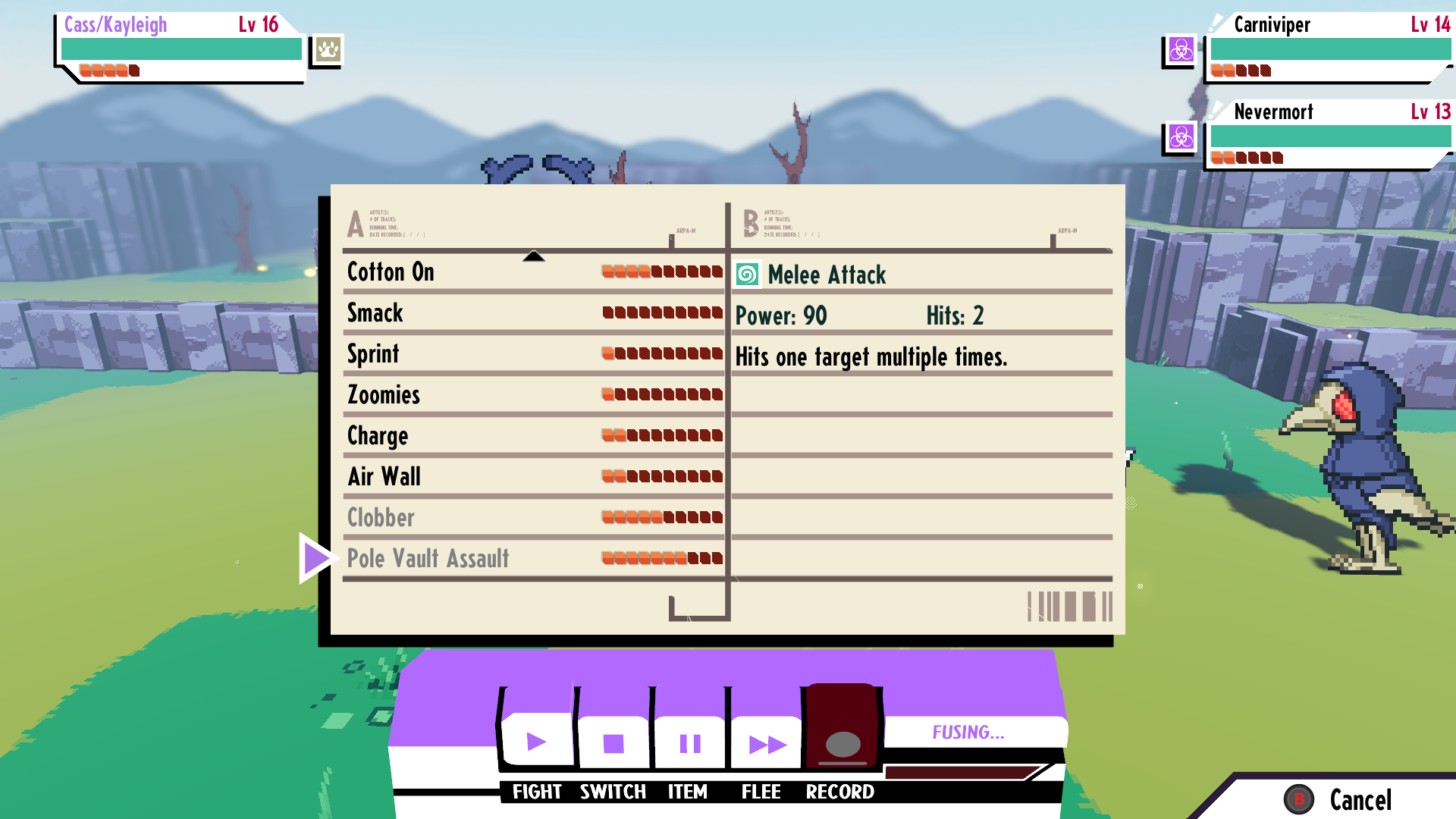
Not only does it mean you can use any of the active moves assigned to either monster used to create your fusion form, but your passive moves will all still be able to trigger. You can have very interesting and versatile fusion forms as a result of this!
There are also unique “Fusion Power” moves that you can obtain when fused, but we can talk about that another time!
There’s one more cool thing to mention when talking about stickers – you can get uncommon and rare variants. Let’s have a look at this move set for Palangolin:
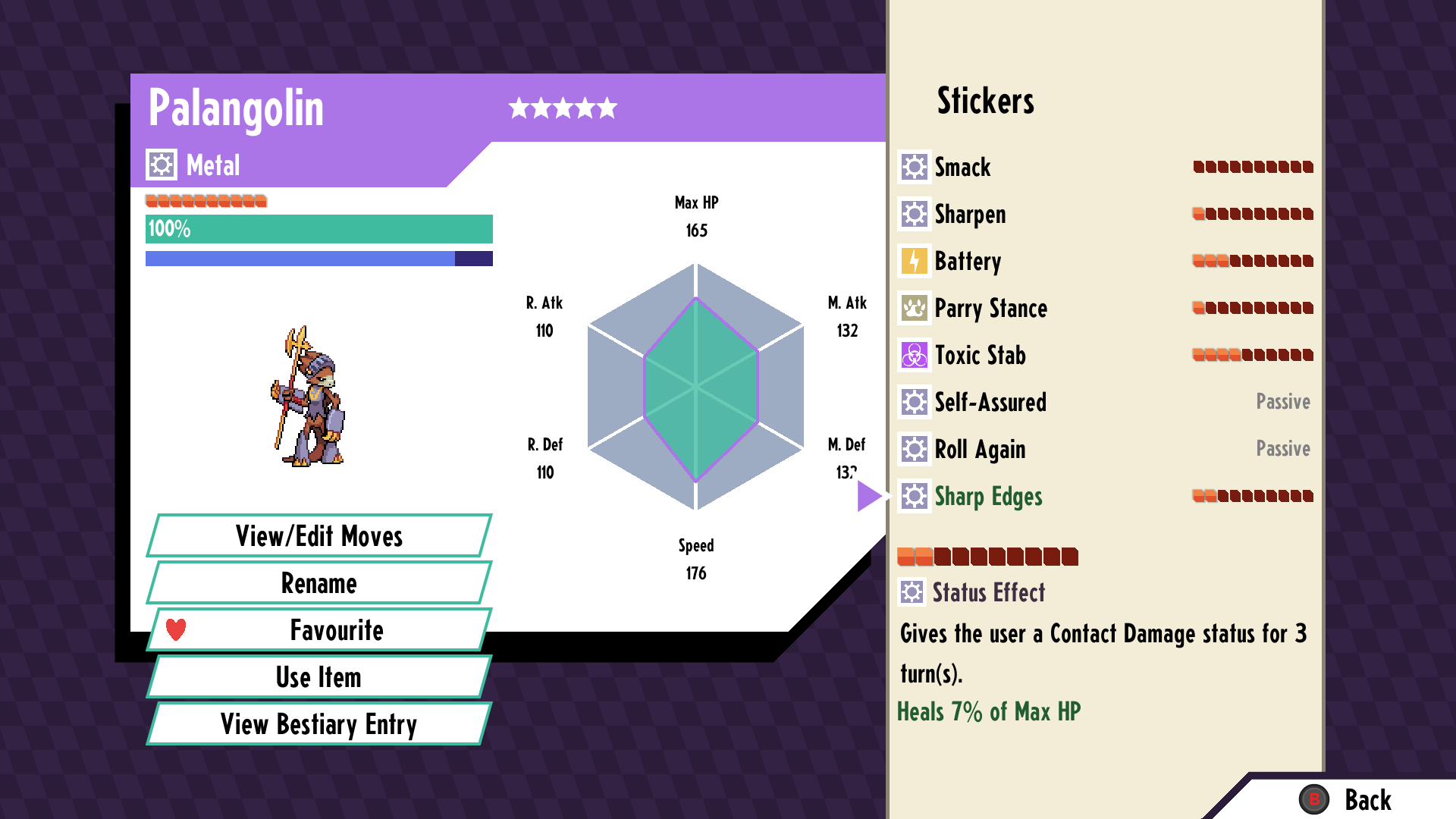
Do you see how “Sharp Edges” is displayed with green text? That means it is uncommon, and has a bonus effect that is listed on the move description. In this case, it heals 7% of the owner’s HP when activated. There are lots of different bonus effects, and they differ depending on the kind of move and its rarity. You might find yourself coming across some extra useful versions of commonly-found move stickers!
This status page also displays the stat balance of the monster form. Palangolin is better at melee combat, which is no surprise.
Next Time
Wow, there sure are a lot of moves with many different elemental types. I wonder how they all work? I guess we’ll find out next time! If you want to ask any questions, feel free to visit the official Discord and follow us on Twitter!
